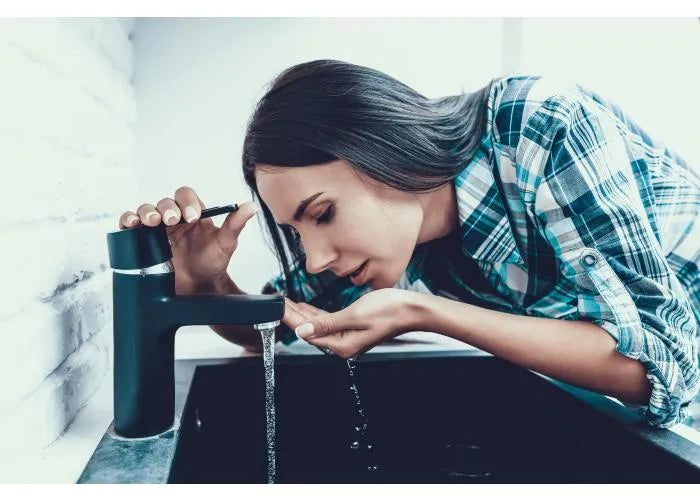There have been some pretty unpalatable things found in tap water over the years.
Things that may make you look at that glass of tap water sitting next to you in a whole new, horrifying light!
Ready to be disgusted? Read on.
1. Animal faeces
It’s true. There have been incidents where animal faeces have gotten into water supplies.
In the town of Walkerton, Canada, water supplies were contaminated by cattle faeces after heavy rainfall. The water wasn’t properly treated and made 2,000 people sick, killing 7.
Depending on where you live, water supplies for tap water are disinfected and undergo strict testing for safety.
But sometimes, incidents like the one in Walkerton can happen.
2. Harmful microbes
Because of animal waste, insects, and even carcasses, microbes that cause sickness can get into tap water.
In 2008, 22 people in England’s Lancashire became sick with cryptosporidiosis, a disease with symptoms including diarrhoea, vomiting, and fever, after a harmful parasite got into the tap water.
The parasite that causes this disease is resistant to certain chemicals that are used to disinfect water supplies.
But how did that parasite make its way into the water supply in the first place?
A rabbit got into one of the water tanks that provided for the region.
3. Chemicals
Chlorine isn’t just in your swimming pool.
Chemicals, like chlorine, are often used at small, safe levels to disinfect our tap water, and to protect us from many illness-causing microbes.
Sometimes, though, a few too many chemicals can get through – which is exactly what happened to residents in Derbyshire and Leicestershire in 2016.
Their water supply became contaminated with unusually high levels of chlorine.
Agricultural work can also leak toxic pesticides and herbicides into water supplies. While your water supply is regularly tested for these chemicals, there’s such a wide variety of them, that it can be difficult to detect them all.
4. Lead
Lead in water can be surprisingly common, and has even been found in the water supply of some schools in the UK.
Lead usually gets into water through old pipes. Even though lead pipes aren’t installed anymore, some of these old pipes are still connected to older buildings. If water becomes too corrosive with chemicals like chlorine, small pieces of pipe can get into the water supply.
5. Pharmaceuticals
A cocktail of birth control pills, antidepressants, and painkillers has been found in some water supplies.
Luckily, only a small amount of them is detected in tap water, and they don’t pose any risk to our health.
But there might be some more testing in the future, since pharmaceuticals leaking into bodies of water are known to harm aquatic life.
Keep your water pristine
While these things have been found in tap water, it is generally safe to drink. Depending on where you live, your water is regularly tested and thoroughly treated for safety.
But, as you’ve seen in some of the incidents described here, slip ups do occur. And some of these mistakes have put people in harm’s way.
But don’t worry. The good news is that there’s something you can do about it.
So, what can you do to protect yourself?
Filtering your water is a good way to ensure that what you’re drinking is high-quality – with no unsavoury things lurking around.
Doulton’s hand-made ceramic filters, for example, remove up to 99.99% of contaminants like bacteria, microplastics, chlorine, heavy metals, and limescale.
Even if the risk is small, it’s best to be safe.
Drink mineral-rich water with the peace of mind knowing that it’s truly pristine.






